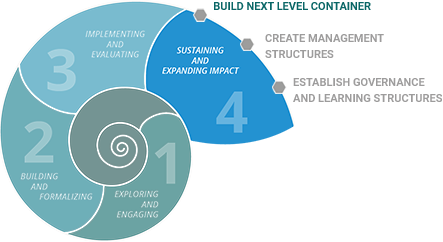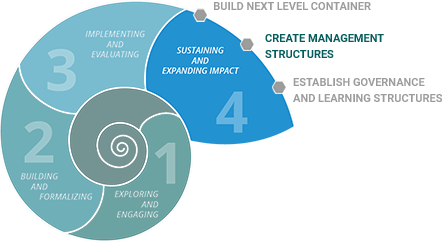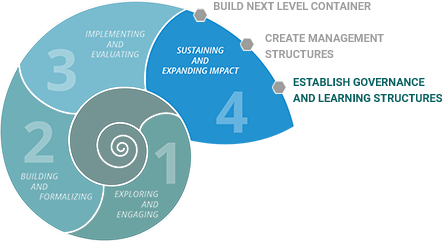When the time comes for taking the collaboration to the next level of impact, institutionalizing or replicating its success, new challenges are bound to arise. It is not always possible for the core group or a project secretariat that successfully implemented the initiative to manage an initiative’s long-term implementation as well. They may have done their best to take the initiative to this point; now other people need to take over and continue. New stakeholders need to get engaged.

Some collaboration initiatives have served their purpose after Phase 3 and do not need to be continued. However, others may warrant the further development of more formal structures for a next level impact. Replication or institutionalization to expand the impact requires new and more formalized management. The collaboration ecosystem needs to be converted into an organizational structure. It will assume an institutionalized identity, be it in the form of a new legal entity or the integration into existing legal entities. Hence, management structures need to be put in place.

Taking a collaboration initiative to the next level of impact poses new challenges. Visions need to be revived and renewed. The complementary contribution and the purpose of the now much more formalized organizational structure needs to be revisited. It is therefore important to stay faithful to the original intent of bringing forward transformative change in collaboration with multiple stakeholders. This will require more representative governance structures and above all, deliberately created spaces and structures for learning together how to expand and sustain the impact.
